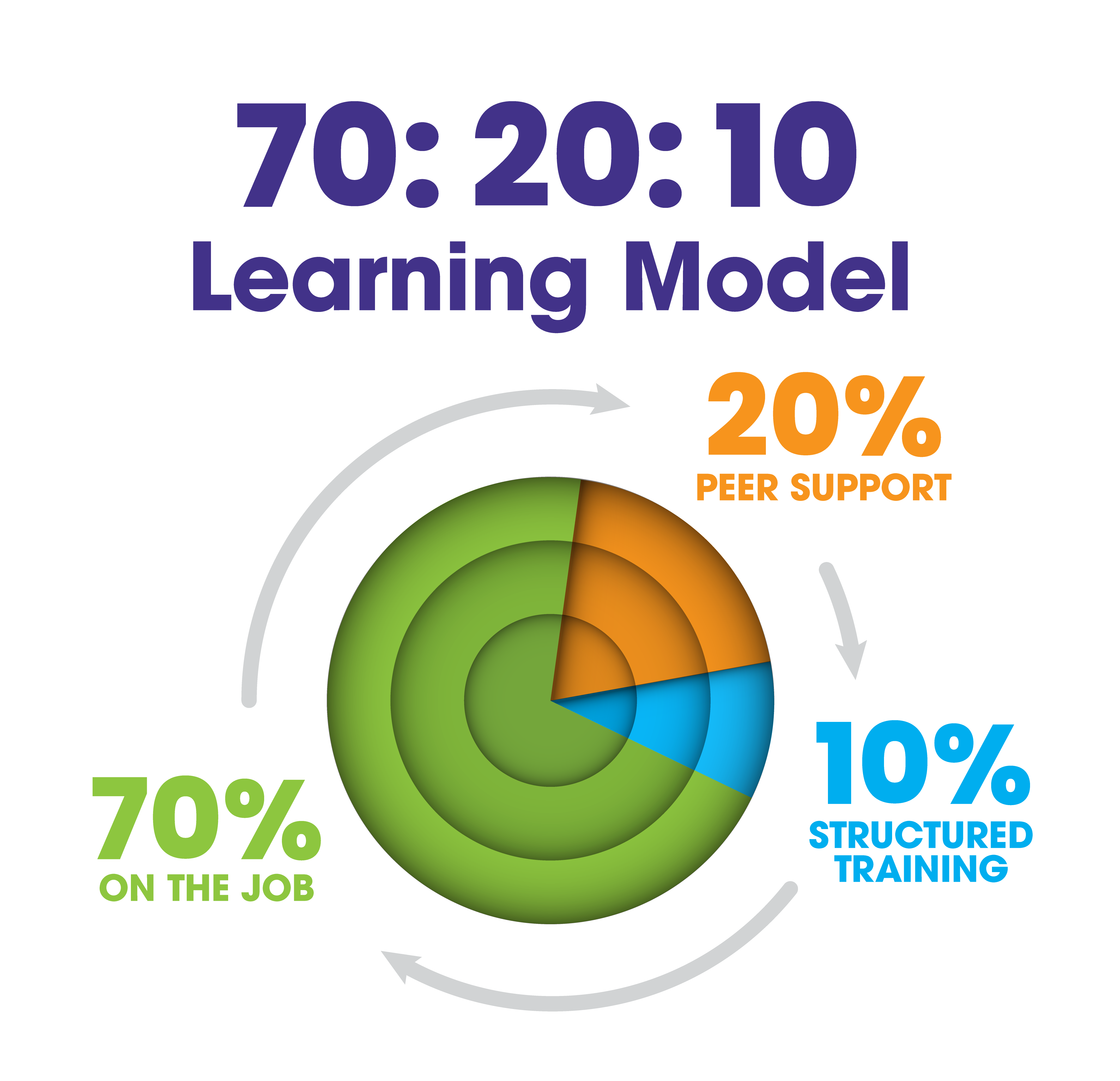By Alex N. Ryan, Chief Strategist, Evolve Solutions Group
 You may have heard of the 80/20 rule, or the Pareto principle. The 80/20 rule states that roughly 80% of effects come from 20% of causes. From a personal productivity perspective, this means that 80% of an individual’s results come from only 20% of their efforts.
You may have heard of the 80/20 rule, or the Pareto principle. The 80/20 rule states that roughly 80% of effects come from 20% of causes. From a personal productivity perspective, this means that 80% of an individual’s results come from only 20% of their efforts.
The 70/20/10 model is a management and leadership model similar to the 80/20 rule except it works in reverse. 70% of the employee development activities are the most effective and are primarily informal training that require the least amount of energy and overhead. 10% of employee development activities are the formal training and development initiatives which require the most amount of costs, effort, and overhead.
We use the 70/20/10 model as a structure or decision tree for determining how to plan for and invest in employee development with the highest potential for success.
The 70/20/10 Method – Planning Your Training & Development Initiatives
70% On-The-Job Training
- Learning the tasks and activities of the job
- Reviewing instructions or guides for the task
- Work experience
- Getting timely feedback from managers and peers about completed tasks and activities
20% Coaching and Peer Learning
- Formal and informal coaching and mentoring programs
- Peer support and cross-training
- Just-in-time support in the flow of work
10% Formal Training and Development
- Formal training programs – synchronous and asynchronous
- Industry conferences and workshops
- Ideal for foundational or advanced skill development and practice
When Training isn’t the Answer
The 70/20/10 model can also help you to determine whether the business issue is actually an issue that can be solved by training.
Root Cause Analysis Using the 70/20/10 Model:
70% Problems with Process and Technology
- Technology preventing people from executing efficiently
- Overly-complex or convoluted process
- Unable to use technology due to lack of skill or fit for purpose
20% Mindset and Skillset
- Need for mindset shift
- Organizational change not implemented
- Lacking skills to operate effectively
10% Skill Development and Practice
- Formal training lacking critical skill development
- Missing practice or simulation of new skills
- Training isn’t customized or tailored to individual or organizational needs
Once you have identified the business issue or root cause, you can then again go back to the 70/20/10 model from a learning and development perspective to determine what you need to do to support your organization. If the root cause doesn’t fall within the 10%, then training isn’t the answer.
Performance Support to the Rescue – Supporting Learners at the Point of Need
When there is a deficit or business issue, the most common response is to offer training. Let’s look at some examples:
1 – Not enough sales?
Training Solution (10% – Formal Training) – Train employees on the ins and outs of the product to better communicate the benefits to potential buyers. This may solve product knowledge issues but won’t solve lack of sales process and business development deficiencies.
Peer Coaching Solution (20% – Coaching) – Partner struggling employees with more senior employees and have them observe and then model their behavior. This approach allows high performers to further hone their skills (teacher becomes the student) and supports those who are struggling with tangible and actionable skills.
2 – Process inconsistencies?
Training Solution (10% – Formal Training) – Retrain on processes and procedures. Training again on a process or procedure outside of the flow of work may fall short, and leave people frustrated and disengaged.
On-the-Job Solution (70% – OJT/Performance Support) – Provide just-in-time quick reference and support resources. Having quick access to performance support materials in the flow of work, reduces disruption and increases understanding and engagement.
What is Performance Support?
Performance support materials can take many forms such as quick reference guides, short explainer videos, video playlists, infographics, simulations, branching scenarios, or step-by-step guides. These tools are readily accessible and can be used in the flow of work and reduce the disruption associated with formal training activities. Performance support mechanisms focus on the application of the skills, in real time, at the point of need.
Learning at the Point of Need
By incorporating performance support materials into the workplace at the learner point of need, you give your employees the opportunity to actively engage in skill building in the flow of work. When employees can self-help, get questions answered easily and in a format that is comfortable to them, they feel empowered and more willing to seek out just-in-time materials in the future. Employees who are actively engaged, seeking knowledge, and feeling supported in their work, are more successful and satisfied in their role.
Ways to meet learners at their point of need:
- Have multiple types of learning available (video, quick reference, elearning, animations, simulations, etc.)
- Centralize training, performance support and reference materials (i.e. Learning Portals)
- Allow self-directed learning
As a training professional, you’ll best serve your organization by being clear about when formal training (10%) is a valid solution and when investments should be made in other areas. When training doesn’t work, find the root cause of the problem and develop appropriate options for meeting the organizational objectives. Make sure these options are reasonable based on your organization’s needs and finances. When training isn’t the answer: you may need to look at performance support, just-in-time training, microlearning, or even peer-support and coaching to support your learners at the point of need.
If you’d like help determining the issues, objectives, and what types of training solutions would be appropriate for your organization’s objectives, schedule a consult today.
